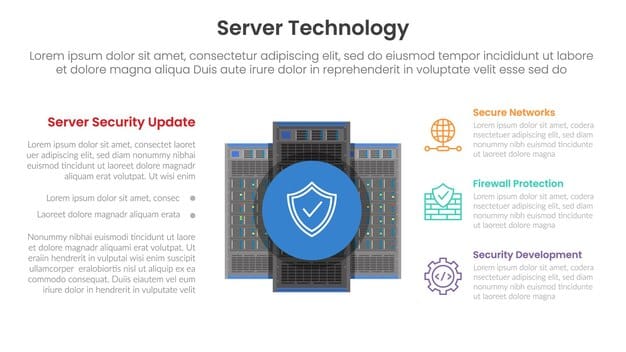Tech’s Role in US Elections 2026: Security & Access

The evolving landscape of technology significantly influences US elections, presenting both opportunities for enhanced security and accessibility and challenges requiring meticulous foresight for the 2026 electoral cycle.
The intricate dance between innovation and tradition defines modern democracy, profoundly shaping electoral processes. In the United States, few areas illustrate this dynamic more vividly than the convergence of technology and elections. As we approach 2026, the discussion surrounding The Impact of Technology on US Elections: Ensuring Security and Accessibility in 2026 intensifies, demanding a comprehensive look at how digital advancements are redefining the very fabric of our democratic exercise.
The Digital Transformation of Electoral Processes
The electoral landscape has irrevocably shifted into the digital realm, transforming how votes are cast, counted, and verified. This transformation began years ago with electronic voting machines and online voter registration, fundamentally altering the operational dynamics of elections. The promise of efficiency and accuracy drove much of this early adoption, aiming to streamline traditionally labor-intensive processes. Automated systems can now handle vast quantities of data, facilitating voter registration and tabulation far more rapidly than manual methods ever could. This move away from purely analog systems has introduced new layers of complexity, requiring robust frameworks to manage the inherent opportunities and risks.
However, the journey has not been without its challenges. The introduction of digital tools brought with it concerns about their integrity and the potential for manipulation. Early electronic voting machines, for example, faced criticism regarding their lack of paper trails and susceptibility to tampering. These concerns highlighted the critical need for a delicate balance: leveraging technology’s advantages while safeguarding the foundational principles of democracy, such as transparency and verifiability. The evolution continues, with new technologies constantly emerging, each bringing its own set of potential benefits and demanding rigorous evaluation before widespread implementation.
The fundamental shift underscores a broader societal trend towards digitalization. Every sector, from finance to healthcare, has embraced technological solutions to enhance operations and service delivery. Elections are no exception. The digital infrastructure supporting our daily lives is becoming increasingly intertwined with our civic duties, creating both unprecedented opportunities for engagement and novel vulnerabilities that require sophisticated countermeasures. Understanding this ongoing transformation is paramount to ensuring the continued health and integrity of the democratic process.
Evolution of Voting Technologies
Historically, American elections relied on paper ballots and mechanical machines. The transition to electronic systems was spurred by desires for faster results and reduced human error. Today, we see a spectrum of technologies:
- Direct-Recording Electronic (DRE) Machines: These machines record votes electronically without a paper ballot. While efficient, their “paperless” nature has raised security concerns.
- Optical Scan Systems: Voters mark paper ballots, which are then scanned and tabulated by machines. This method combines the speed of technology with the security of a paper trail.
- Ballot Marking Devices (BMDs): These devices assist voters, particularly those with disabilities, in marking a paper ballot, which is then scanned. They provide accessibility while maintaining a paper record.
The Rise of Online Voter Registration
Online voter registration has dramatically increased accessibility for many citizens. It simplifies the registration process, making it more convenient and potentially boosting voter turnout. However, it also introduces data security challenges, requiring robust encryption and authentication protocols to protect sensitive personal information from cyber threats. State election officials must constantly update their systems to counter evolving cyber risks.
The technological shift is not static; it is a continuous process of adaptation and innovation. As new threats emerge, so too must the defenses, ensuring that the integrity of the vote remains uncompromised. The interplay between accessibility and security will define the success of these ongoing digital transformations.
Ensuring Security for US Elections in 2026
Security remains the paramount concern in the technological evolution of US elections. As systems become more interconnected and complex, the potential attack surfaces for malicious actors also expand. The 2026 elections present a crucial juncture where lessons learned from past cycles, particularly concerning cyber interference, must be rigorously applied and advanced. Protecting the sanctity of the vote involves a multifaceted approach, extending from the physical security of voting machines to the digital resilience of voter registration databases and results tabulation systems.
The integrity of an election is not merely about preventing outright fraud; it’s also about maintaining public trust. If citizens lose faith in the security of the electoral process, the very legitimacy of democratic outcomes can be called into question. This makes cybersecurity not just an operational challenge, but a fundamental pillar of democratic governance. Investments in advanced security measures, coupled with stringent auditing and clear communication, are essential to reinforce public confidence and dispel misinformation campaigns that seek to undermine the electoral system.
Cybersecurity and Data Protection
The digital infrastructure underpinning US elections is a prime target for cyberattacks. Protecting voter registration databases, election management systems, and unofficial tabulation systems from breaches is critical. Attack vectors can range from sophisticated state-sponsored efforts to individual hacking attempts.
To mitigate these risks, a framework of best practices is being implemented:
- Multi-Factor Authentication (MFA): Implementing MFA for all access to sensitive election systems adds a crucial layer of security, making it significantly harder for unauthorized users to gain entry.
- Regular Security Audits and Penetration Testing: Independent experts regularly test election systems for vulnerabilities, identifying and patching weaknesses before they can be exploited.
- Encryption: Encrypting voter data and election results, both in transit and at rest, protects sensitive information from interception and unauthorized access. This includes encrypted communications between polling places and central tabulation points.
- Intrusion Detection Systems (IDS): These systems monitor network traffic for suspicious activity, alerting administrators to potential cyberattacks in real time.
Supply Chain Security and Voting Machine Integrity
The hardware and software used in voting systems are often manufactured by private companies. Ensuring the integrity of this supply chain is vital to prevent embedded vulnerabilities or malicious code. This requires rigorous oversight and testing.
Key measures include:
- Certification and Testing: All voting equipment must undergo stringent certification processes by federal and state authorities, ensuring they meet security and accuracy standards.
- Independent Vulnerability Assessments: Beyond manufacturer assurances, independent cybersecurity researchers should regularly assess voting machines for potential flaws.
- Physical Security of Machines: Secure storage, transportation, and handling of voting equipment are crucial to prevent physical tampering. This includes chain-of-custody protocols from the moment machines are deployed until they are stored.
The Role of Artificial Intelligence in Election Security
While AI poses potential risks related to deepfakes and misinformation, it also offers powerful tools for enhancing election security. AI-powered algorithms can detect anomalies in voting patterns, identify potential cyber threats, and flag suspicious online activity in real-time. For instance, AI can analyze network traffic to identify unusual data flows that might indicate a cyberattack or analyze social media patterns to detect large-scale disinformation campaigns. Integrating AI into existing security protocols provides a proactive defense against evolving threats, acting as an early warning system.
This proactive stance is critical. The nature of cyber threats is dynamic, constantly evolving in sophistication and scope. Relying solely on reactive measures is no longer sufficient. Leveraging AI can create a more resilient and adaptive security posture, allowing election officials to stay one step ahead of adversaries.
Enhancing Accessibility Through Technology for 2026
Accessibility is a cornerstone of democratic participation, ensuring that all eligible citizens, regardless of physical ability or technological literacy, can cast their vote independently and secretly. Technology has a profound role to play in breaking down traditional barriers to voting, making the electoral process more inclusive. As we look towards 2026, the focus is not just on maintaining current levels of accessibility but actively enhancing them through thoughtful technological integration, ensuring that no voter is left behind.
The principle of universal suffrage means little if practical barriers prevent segments of the population from exercising their right to vote. For individuals with disabilities, technological advancements offer unprecedented opportunities for participation. Similarly, for voters with limited English proficiency or those living in remote areas, technology can bridge geographical and linguistic divides. The challenge lies in implementing these solutions broadly and effectively, ensuring they are user-friendly, secure, and compliant with accessibility standards.
Ultimately, enhancing accessibility through technology is about fostering a more equitable and representative democracy. When more citizens can participate, the outcomes of elections become a more accurate reflection of the popular will, strengthening the democratic process as a whole.
Accessible Voting Machines and Tools
For voters with disabilities, technology offers solutions to overcome traditional voting barriers. Ballot Marking Devices (BMDs), for example, are crucial.
- Audio Ballots and Keypads: These allow visually impaired voters to listen to the ballot and make selections using a tactile keypad, providing an independent and verifiable voting experience.
- Touchscreens with Adjustable Settings: For voters with limited dexterity, touchscreens with large font options, high contrast displays, and adjustable response times improve usability.
- Sip-and-Puff Devices: For individuals with severe mobility impairments, these specialized interfaces allow control of a computer or voting machine using breath, enabling them to mark their ballots independently.
Bridging the Digital Divide
While technology generally enhances accessibility, the “digital divide” remains a concern. Not all citizens have equal access to reliable internet or digital devices, which can create new barriers, particularly for online voter registration or accessing election information.
Addressing this requires:
- Public Access Points: Providing free and reliable internet access at public libraries, community centers, and even mobile units can help bridge the gap.
- Community Outreach and Education: Programs to educate citizens on how to use digital electoral tools and where to access them are vital.
- Hybrid Systems: Maintaining traditional, non-digital voting options alongside technological advancements ensures that those without digital access are not disenfranchised. This provides a safety net, ensuring inclusiveness across all demographics.
Language Accessibility in Digital Platforms
For non-English speaking voters, technology can provide real-time translation and multi-language ballot options on digital voting machines and online registration portals. This ensures that language is not a barrier to understanding the ballot or the registration process, promoting broader participation from diverse communities. Offering comprehensive language support reflects a commitment to inclusive democratic participation.

Combating Disinformation and Misinformation in the Digital Age
The proliferation of disinformation and misinformation is one of the most insidious threats to democratic integrity in the digital age. Powered by social media algorithms and the rapid spread of information, false narratives can quickly erode public trust in elections, suppress voter turnout, or even incite violence. As the 2026 elections loom, the challenge is not only to counter these narratives but to build resilience within the electorate to discern truth from falsehood.
This requires a multi-pronged approach involving technology companies, government agencies, media outlets, and individual citizens. It’s an ongoing battle against weaponized information, where speed, accuracy, and critical thinking are the primary defenses. The goal is to ensure that voters base their decisions on accurate information, thereby upholding the fairness and legitimacy of democratic outcomes.
The Threat Landscape
Disinformation involves intentionally false information spread to deceive, often for political gain. Misinformation, while also false, is often spread unintentionally. Both can have corrosive effects. Tactics include:
- Deepfakes and Synthetic Media: AI-generated audio/video can create realistic but fake content designed to impersonate candidates or spread false statements.
- Social Media Manipulation: Coordinated bot networks and troll farms amplify false narratives, often creating echo chambers that reinforce existing biases.
- Foreign Interference: State actors have been implicated in campaigns to sow discord and influence electoral outcomes through digital means.
Strategies for Countering Digital Threats
Combating these threats requires a collaborative effort:
- Platform Accountability: Social media companies are under increasing pressure to moderate content, label false information, and remove malicious accounts.
- Fact-Checking Initiatives: Independent fact-checking organizations play a crucial role in debunking false claims and providing accurate information to the public.
- Media Literacy Education: Educating citizens, starting from a young age, on how to critically evaluate online information and identify biases is a long-term solution.
- Rapid Response Units: Election officials and security agencies establish units to monitor the information landscape and quickly counter false narratives before they go viral.
The Role of Responsible AI in Combating Disinformation
While AI can generate deepfakes, paradoxically, it can also be part of the solution. AI algorithms can be trained to detect patterns indicative of fabricated content. Tools exist to identify AI-generated images or audio by analyzing subtle digital footprints. Furthermore, AI can help in flagging suspicious activity on social media platforms, such as coordinated inauthentic behavior, allowing for quicker takedowns of malicious content. Responsible AI development focuses on creating protective technologies that support accuracy and transparency in the information ecosystem.
The fight against disinformation is not just an electoral issue; it’s a societal one. It requires constant vigilance and adaptation to new technologies and new means of manipulation.
Legal and Regulatory Frameworks for Tech in Elections
The rapid pace of technological change often outstrips the ability of legal and regulatory frameworks to keep pace. This gap creates vulnerabilities and ambiguities that can be exploited, or simply lead to inefficiencies and lack of trust. For the 2026 US elections, robust and adaptable legal and regulatory frameworks are essential to govern the use of technology, ensuring both security and accessibility while upholding democratic principles. This involves a delicate balance between encouraging innovation and imposing necessary oversight.
Establishing clear guidelines helps to standardize practices across different states, reducing fragmentation and ensuring a more consistent application of electoral law. Without such frameworks, the risk of ad-hoc decisions, legal challenges, and erosion of public confidence increases significantly. The goal is to create a predictable and transparent environment for all stakeholders involved in the electoral process, from technology providers to election administrators to voters themselves.
Current Legislation and Gaps
Existing federal and state laws, such as the Help America Vote Act (HAVA) of 2002, set guidelines for voting equipment and accessibility. However, these laws often predate many of the advanced technologies and cyber threats seen today.
Key areas for legislative review and development include:
- Cybersecurity Standards: Developing explicit, mandatory national cybersecurity standards for all election systems, including software and hardware, is crucial.
- AI Regulation: Legislation specific to the use of AI in campaign advertising, particularly regarding deepfakes and generative media, is urgently needed to prevent deceptive practices.
- Data Privacy: Strengthening data privacy laws to protect sensitive voter information from breaches and misuse is paramount, especially as more data is digitized.
- Supply Chain Auditing: Legal mandates for comprehensive, independent auditing of the entire supply chain for voting equipment, from manufacturing to deployment, are necessary.
The Role of Federal and State Agencies
Various agencies play a critical role in regulating election technology.
- Election Assistance Commission (EAC): The EAC sets voluntary guidelines for voting equipment and certifies voting system test laboratories. Its role needs to evolve to address emerging technologies.
- Department of Homeland Security (DHS) / Cybersecurity and Infrastructure Security Agency (CISA): CISA provides cybersecurity assistance and threat intelligence to state and local election officials. Their collaboration with states is vital for defensive measures.
- Federal Election Commission (FEC): While primarily focused on campaign finance, the FEC’s role may need to expand to encompass digital campaign ethics and the impact of AI.
International Cooperation in Election Security
Election technology and cybersecurity transcend national borders. Foreign adversaries pose persistent threats. Collaboration with international partners to share threat intelligence, best practices, and develop common standards for election security can strengthen global democratic resilience. Understanding how other nations tackle similar challenges can provide valuable insights and innovative solutions. This international dimension highlights the interconnectedness of electoral systems in the face of global digital challenges.

Case Studies and Lessons Learned
Examining past elections provides invaluable insights into the practical challenges and successes of integrating technology while ensuring security and accessibility. These real-world experiences highlight both the vulnerabilities that must be addressed and the innovative solutions that can be scaled for future electoral cycles, particularly as we prepare for 2026. Learning from these case studies is not just an academic exercise; it’s a critical component of strategic planning for future elections, guiding resource allocation and policy development.
Each election cycle brings new lessons, whether from system glitches, security breaches, or successful implementations of new accessible tools. Analyzing these events impartially allows election officials, policymakers, and technology providers to refine their approaches and build more resilient and inclusive electoral systems. The focus shifts from merely reacting to problems to proactively predicting and mitigating potential issues.
2020 and 2022 US Elections: Key Takeaways
The 2020 presidential election saw an unprecedented expansion of mail-in voting due to the pandemic, heavily relying on digital systems for ballot tracking and signature verification. This revealed:
- Scalability Challenges: While digital tracking helped manage the surge, it also highlighted the need for robust, scalable IT infrastructure to handle sudden increases in volume.
- Supply Chain Vulnerabilities: Dependencies on specific vendors for ballot printing and processing became evident, emphasizing the need for diversification and secure supply chains.
- Misinformation Amplification: The rapid spread of falsehoods about election integrity underscored the critical role of social media platforms in combating misleading narratives effectively.
The 2022 midterms continued these trends, with particular focus on specific state-level issues:
- Targeted Cyberattacks: Continued attempts by sophisticated actors to breach state election systems, reinforcing the need for constant vigilance and updated cybersecurity protocols.
- Accessibility Successes: Increased use of BMDs and other assistive technologies showed positive impact on voter participation for individuals with disabilities.
- Post-Election Audits: Manual and risk-limiting audits gained prominence, proving effective in verifying machine counts and bolstering public confidence in results.
International Examples of Technology in Elections
Lessons can also be drawn from other democracies:
- Estonia’s e-Voting System: Estonia has implemented a secure internet voting system since 2005. Their success is attributed to strong national digital ID infrastructure, transparent audit trails, and high public trust in technology. However, critics point to the complexity of auditing and potential for malware on voter devices.
- Brazilian Electronic Voting: Brazil uses DRE machines nationwide, renowned for rapid tabulation. Their system includes robust seals and public hash comparisons to ensure software integrity, though it faces ongoing debate regarding the ultimate verifiability without a paper trail.
- India’s EVMs: India uses DREs with a ‘Voter Verifiable Paper Audit Trail’ (VVPAT), where a paper slip is generated for each vote, allowing voters to verify their choice and enabling post-election audits. This hybrid approach combines efficiency with verifiability.
These international experiences highlight diverse approaches and the importance of adapting solutions to specific national contexts while learning from both successes and failures abroad.
The Path Forward for 2026 and Beyond
As we look towards the 2026 US elections and future cycles, the integration of technology into the electoral process will only deepen. The challenge lies in navigating this evolution proactively, ensuring that innovation serves the core tenets of democracy: security, accessibility, and public trust. This requires a forward-thinking strategy that anticipates emerging threats and embraces responsible technological advancements. It’s not about adopting every new technology, but rather discerning which tools genuinely enhance democracy without compromising its integrity.
The path forward hinges on continuous adaptation, collaboration, and a commitment to transparency. The electoral system is a living entity, constantly evolving with societal and technological shifts. Therefore, a static approach to governance and security is insufficient. Instead, a dynamic framework, capable of incorporating new knowledge and responding to unforeseen challenges, is essential for safeguarding the future of democratic elections.
Strategic Priorities for Election Technology
Several strategic priorities emerge for robustly managing technology in upcoming elections:
- Investment in Infrastructure: Sustained federal and state funding is needed to upgrade aging election infrastructure, replacing outdated machines and bolstering cybersecurity defenses.
- Research and Development: Continued funding for R&D into secure and accessible voting technologies, including exploring technologies like blockchain for secure record-keeping (though acknowledging its current limitations for primary vote tabulation).
- Workforce Development: Training election officials and poll workers in cybersecurity best practices and the operation of new technologies is crucial for effective implementation and incident response.
- Public Education Campaigns: Proactive, non-partisan campaigns to educate the public about election technology, security measures, and how to identify misinformation can build trust and resilience.
The Human Element: Trust and Transparency
Ultimately, technology serves people. Building trust in the electoral system requires more than just secure machines; it demands transparency in processes and clear communication with the public.
This includes:
- Open Source Initiatives: Where appropriate, making election system source code publicly available for review by security experts can foster transparency and identify vulnerabilities.
- Post-Election Audits: Implementing robust, transparent, and publicly verifiable audit processes, such as risk-limiting audits, that confirm the accuracy of machine counts using paper records.
- Voter Education and Engagement: Empowering voters with knowledge about how their votes are cast, counted, and protected can counter skepticism and misinformation, ensuring they have confidence in the system.
The convergence of technology and elections represents one of the most critical challenges and opportunities for democratic governance. By prioritizing security, embracing accessibility, and fostering transparency, the United States can navigate the digital frontier, ensuring that its elections remain a beacon of democratic integrity in 2026 and for generations to come. This ongoing commitment is essential for maintaining the health and vibrancy of American democracy.
| Key Aspect | Brief Description |
|---|---|
| 🔒 Enhanced Security | Cybersecurity protocols, supply chain integrity, and AI integration are crucial to protect against threats. |
| ♿ Increased Accessibility | Technology provides tools like BMDs and multi-language support, ensuring broader voter participation. |
| 🛡️ Combating Disinformation | Strategies include platform accountability, fact-checking, media literacy, and rapid response units. |
| 📚 Legal Frameworks | Updates to laws and regulations are needed to govern new technologies and address emerging threats. |
Frequently Asked Questions About Technology in US Elections
Technology enhances accessibility through tools like Ballot Marking Devices (BMDs), which offer audio ballots, large-font touchscreens, and sip-and-puff devices. These innovations allow voters with visual impairments, limited dexterity, or mobility challenges to mark their ballots independently and privately, ensuring their right to vote is fully supported.
Key cybersecurity threats include hacking of voter registration databases, tampering with voting machines, and denial-of-service attacks on election websites. Disinformation campaigns, foreign interference via social media, and supply chain vulnerabilities in voting equipment also pose significant risks to the integrity and public perception of elections.
Yes, AI can be a powerful tool against disinformation. Algorithms can detect patterns indicative of fabricated content, such as deepfakes, and identify AI-generated images or audio. AI can also flag suspicious activity on social media, like coordinated inauthentic behavior, enabling quicker removal of malicious content and reinforcing platform integrity.
Paper trails are crucial for electronic voting because they provide a verifiable record of each vote, independent of the machine’s electronic count. This allows for manual audits and recounts, which are essential for confirming election results, detecting potential anomalies, and building public trust in the accuracy and integrity of the voting system.
Federal agencies like the Election Assistance Commission (EAC) set guidelines and certify voting systems, while the Cybersecurity and Infrastructure Security Agency (CISA) provides cybersecurity support. State agencies implement these guidelines, manage voter registration, and oversee election day operations, working collaboratively to ensure secure and accessible elections across the nation.
Conclusion
The ongoing integration of technology into US elections is a dynamic and essential process, fraught with both promise and peril. As we approach 2026, the imperative remains clear: leverage innovation to enhance accessibility and efficiency while rigorously fortifying the electoral system against evolving threats. Achieving this delicate balance requires continuous proactive measures, from bolstering cybersecurity defenses and streamlining voting processes to combating disinformation and adapting regulatory frameworks. Ultimately, success hinges on a collective commitment to fostering transparency, building public trust, and ensuring that every eligible citizen can cast their vote securely and independently, thereby preserving the integrity of American democracy for future generations.





